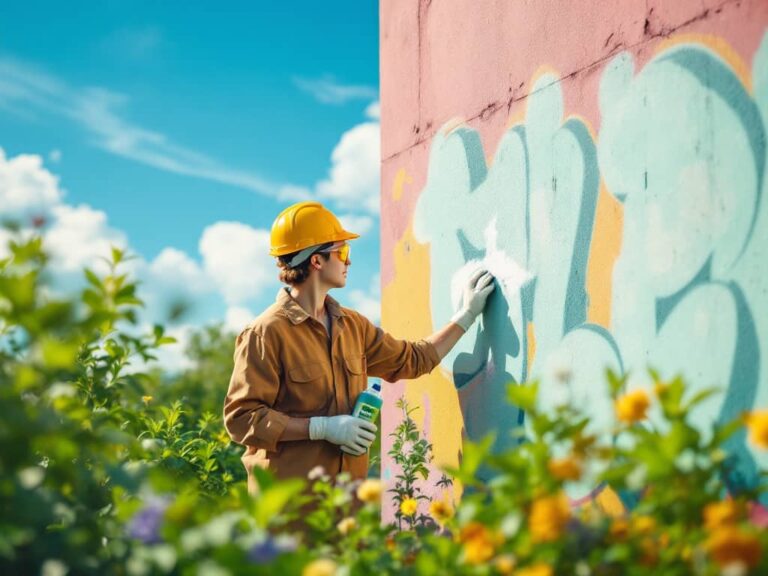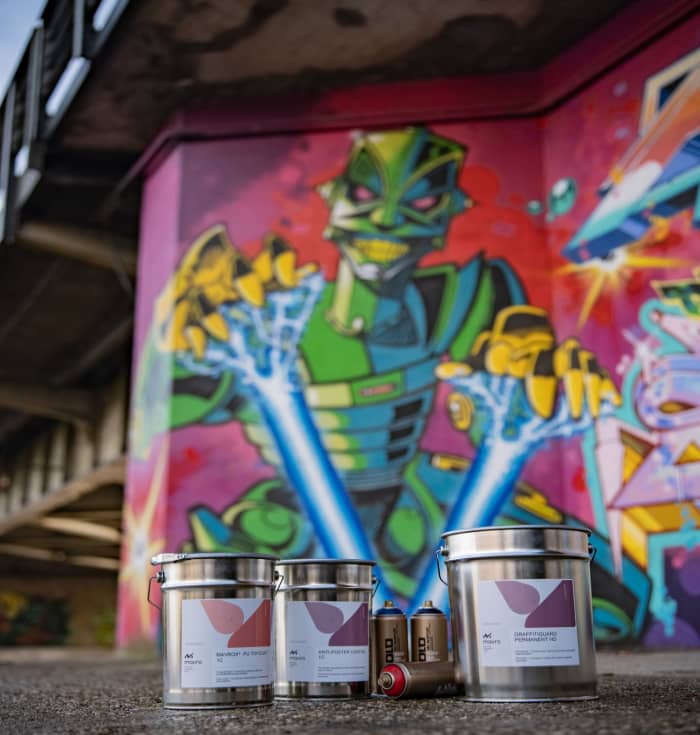Sustainability and Safety in Graffiti Removal
-
Ko van den Boom
- Reading time: 20 minutes
- Graffiti removal, Methods

Graffiti removers are known for their strong performance but often require significant raw materials. It’s crucial to consider the sustainability and safety of these products, both for users and the environment. In this blog, you’ll learn how to approach graffiti removal sustainably.
Why Can Graffiti Removal Be Harmful to the Environment?
Graffiti removers often contain 100% active ingredients, meaning no fillers like water are used. This makes them effective but also resource-intensive.
Additionally, graffiti removal generates waste in the form of leftover paint and debris, which must be managed responsibly.
Contents
Ko van den Boom
Main Categories
Different Types of Anti-Graffiti Coatings and Their Impact
There are two main types of anti-graffiti coatings: semi-permanent and permanent.
- Semi-Permanent Coatings:
These are often wax-based, environmentally friendly, and biodegradable. Known as “sacrificial” coatings, they protect the surface by being removed along with the graffiti. However, the coating must be reapplied after each cleaning. - Permanent Coatings:
Permanent coatings provide a longer-lasting solution, requiring replacement only every 5 to 10 years, making them more sustainable over time.
Proper Use of Graffiti Removers
Using graffiti removers correctly is vital for sustainability. Applying too little product can lead to repeated treatments, which is inefficient. A sufficient layer of remover is often needed to effectively break down the graffiti.
Additionally, paint residues should be collected and disposed of properly to prevent environmental contamination. Absorbent mats are available to help manage waste effectively.
The relationship and differences between street art and graffiti
Sustainability in graffiti removal starts with choosing the right product.
Environmentally friendly coatings, such as wax emulsions, offer a sustainable option. It’s also advisable to select biodegradable graffiti removers and use products efficiently to minimize waste.
Conclusion
Sustainability in graffiti removal deserves attention to reduce its environmental impact. By choosing the right products and managing paint residues responsibly, we can make graffiti removal not only more effective but also greener.





